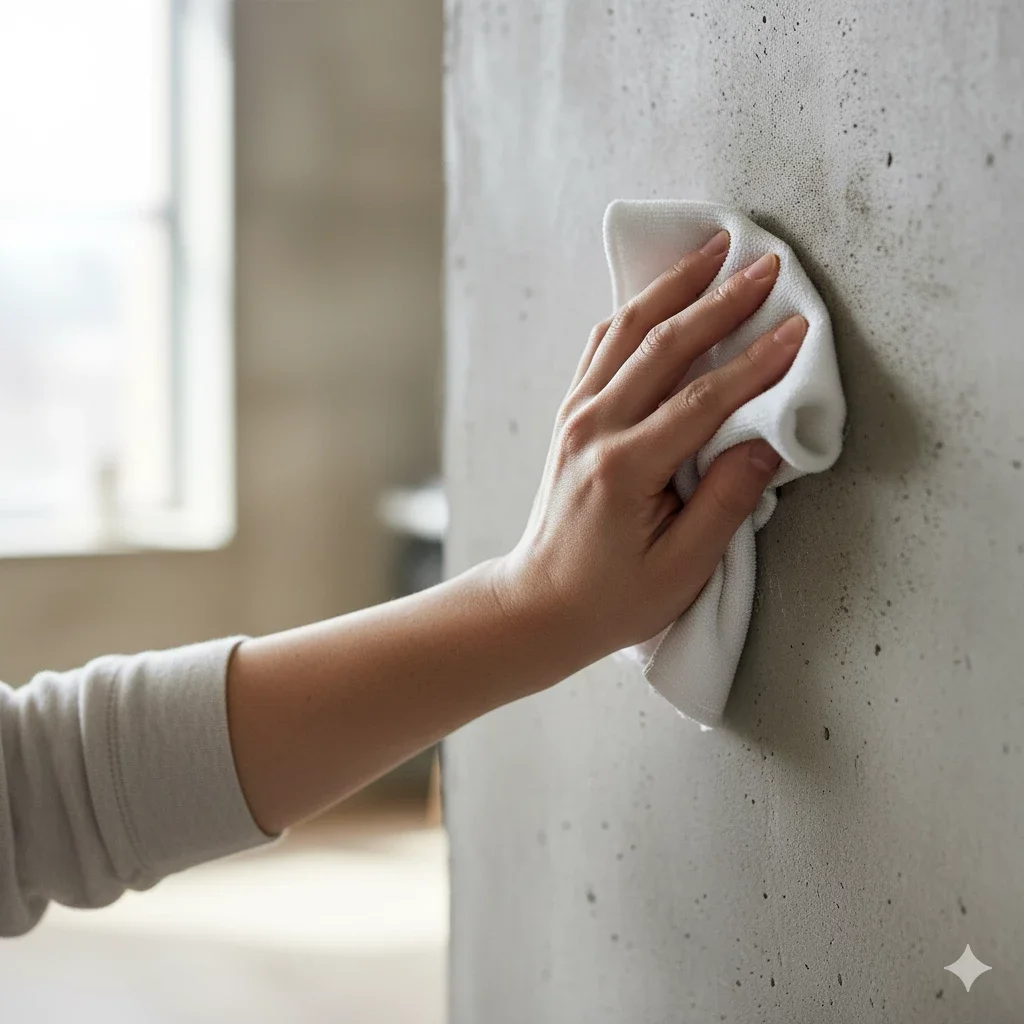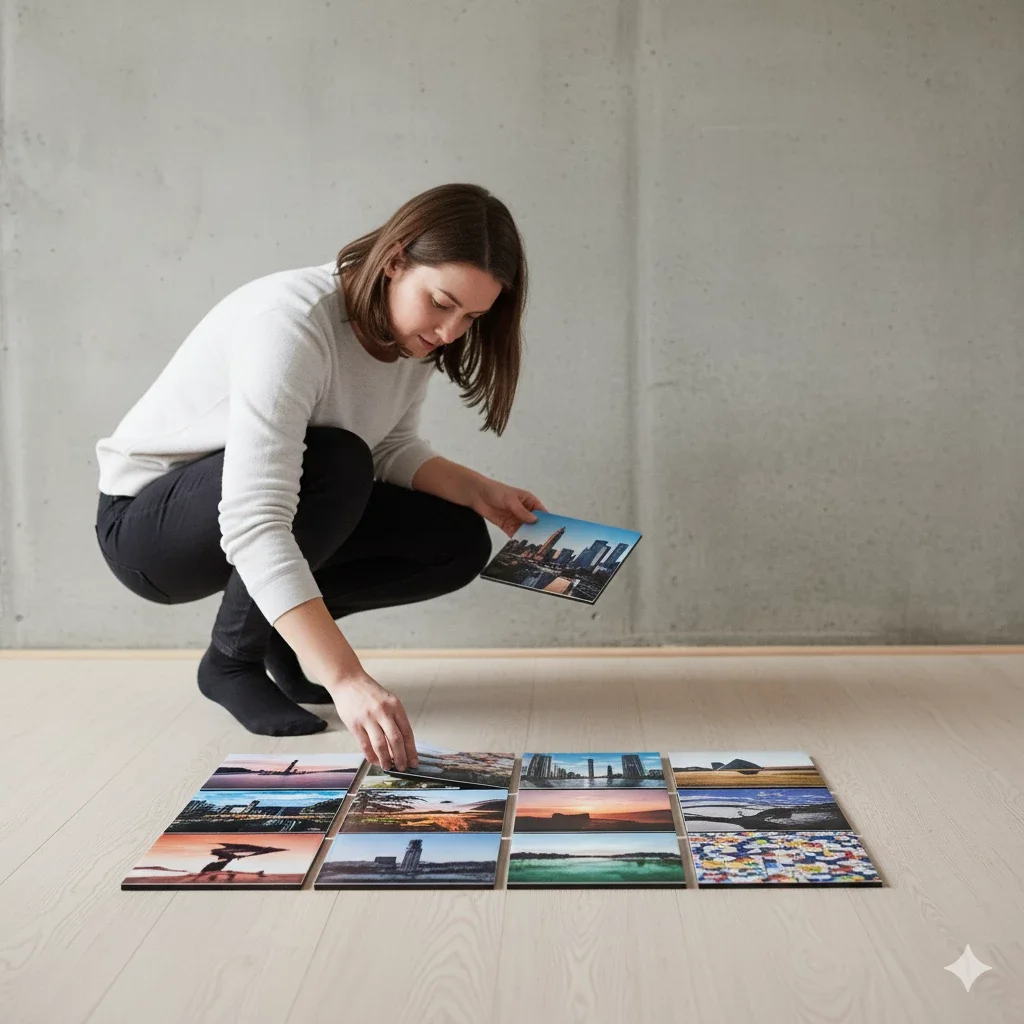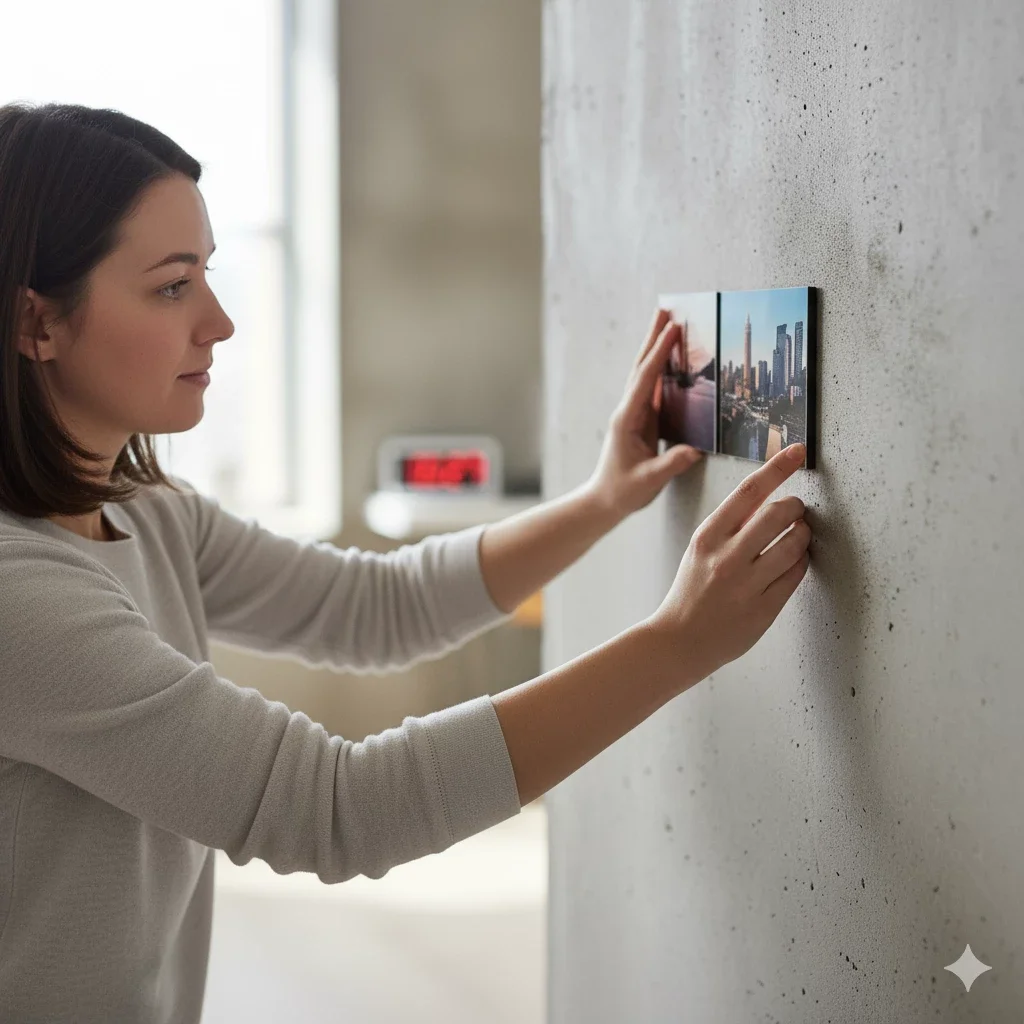How to Hang Art on a Concrete Wall: Renter-Safe Tips
Key Takeaways
- Choose the right method by weight: Adhesive frames (light), hardwall hooks (medium), masonry screws/anchors (heavy);
- For damage-free installs, Mixtiles adhesive, repositionable frames stick to concrete. No tools, no holes, easy to move;
- Use hardwall hooks for moderate weight and minimal pinholes; use masonry screws/anchors for heavy art with proper drill depth;
- Prep matters: Clean the wall, plan your layout, measure twice, and follow height/spacing rules for a polished look.
Wondering how to hang art on a concrete wall without cracking, crumbling, or drilling? Good news: you have options. Whether you’re renting, decorating a basement, or building an art gallery look, this guide covers no-drill solutions, minimal-hole hooks, and pro-level screw-and-anchor methods. We’ll also show you how Mixtiles makes picture hanging effortless; adhesive, repositionable, and damage-free.
Want to hang pictures without nails? Create and order Mixtiles picture tiles in minutes.
What’s the easiest no-drill way to hang art on concrete?
The easiest way to hang pictures on concrete walls without drilling holes is Mixtiles. Our lightweight, adhesive photo tiles can hang your pictures without nails and can be re-positioned if you need help adjusting the layout.
Why Mixtiles work on concrete
Mixtiles use strong adhesive backs that work on concrete when it’s clean, dry, and painted or sealed. They’re designed for hanging picture frames in minutes, are sure to turn blank concrete walls into a beautiful display of art, and are gentle enough to remove without damage.
Step-by-step: hanging Mixtiles on concrete
Follow these quick steps for hanging pictures without nails:

1. Clean the spot with a dry cloth to remove dust.

2. Plan your layout on the floor, then mark light guides on the concrete wall.

3. Peel, stick, and press each tile for 30 seconds; wait per instructions before adjusting.
When should you use hardwall hooks on concrete?
Use hardwall picture hangers when you want a minimal-hole way to hang medium-weight pieces. They tap in with tiny pins and can be used for frames that are heavier than adhesive wall hooks allow.
Best use cases and weight limits
Hardwall hooks are a smart picture hanging hardware choice for small to medium hanging art and décor; check ratings to be sure your items on concrete are supported. For rails or flexible layouts, surface-mounted picture rail hanging systems can be an option with a few small holes.
|
Method |
Typical Weight |
Pros |
Tools |
|---|---|---|---|
|
Mixtiles (adhesive) |
Light |
No drilling holes; repositionable; rental-friendly |
None |
|
Hardwall hooks |
Medium |
Tiny pinholes; quick install |
Hammer |
|
Masonry screws/anchors |
Heavy duty |
Strong enough for large frames |
Hammer drill + masonry bit |
Quick install tips
Hold the hook flush, tap pins evenly, and avoid crumbly spots. Use two hooks for wider hanging pictures and verify the wall finish is sound.
Designing a gallery wall? Try Mixtiles gallery wall kits for picture hanging systems that look curated and install fast.
How do you hang heavier art with concrete screws or anchors?
To hang a heavy frame on a concrete wall, you will need a hammer drill, masonry bit, and anchors or concrete screws. This way to hang large pieces is secure and professional.
Tools checklist
Gather the essentials before you start:
- Hammer drill with masonry bit;
- Concrete screws or sleeve/lead anchors;
- Level, tape, pencil;
- Vacuum and eye protection.
Safe drilling steps
Mark your spot, drill a pilot hole to the specified depth, clear dust, then set the anchor and drive the screw until snug. Hang pictures on concrete, check level, and adjust. For flexible hanging systems, a picture rail can be installed high and used with cords and hooks.
Anchor selection basics
Use sleeve or lead anchors for mirrors and large hanging picture frames. Match drill bit size to anchor specs, and choose picture hanging hardware rated above your artwork’s weight.
What should you avoid on concrete walls?
Skip these mistakes to keep your picture hanging clean and secure:
- Skipping surface cleaning;
- Overloading adhesive options or a single hook;
- Drilling without a masonry bit or dust control;
- Ignoring weight ratings on picture hangers and hardware.
Concrete doesn’t have to limit creativity. Now you know how to hang art on a concrete wall, whether you prefer pictures without drilling holes, minimal pinholes, or heavy duty anchors. Prep well, choose the right hanging hardware, and your layout will look polished.
Ready to hang your pictures without nails? Make a photo gallery wall in minutes with Mixtiles. Easy to use, removable, and shipped with free shipping.
Frequently Asked Questions
What’s the easiest no-drill way to hang art on concrete?
Use high-quality adhesives on clean, painted or sealed concrete. Mixtiles adhesive photo tiles are ideal for lightweight, repositionable frames. Adhesive hooks/strips can work too: clean with a dry cloth, press firmly, respect weight limits, and avoid dusty or unsealed concrete.
What are the main methods to hang art on a concrete wall?
Choose by weight: adhesives (Mixtiles, strips) for light pieces; hardwall hooks with tiny pins for medium weight; and masonry screws/anchors with a hammer drill for heavy frames or mirrors. Prep the wall, measure carefully, and use two points for wider art.
What hardware actually works on concrete walls?
Light: adhesive tiles/hooks on painted or sealed surfaces. Medium: hardwall hooks or concrete pins. Heavy: Tapcon-style concrete screws, sleeve/lead anchors, or a wall-mounted picture rail. Always match the hardware’s rating to your artwork’s weight and follow manufacturer instructions.
Do Command Strips work on painted concrete?
Yes, they work on smooth, painted or sealed concrete indoors. Clean with alcohol, let dry, and stay within the strip’s weight rating. Avoid raw, powdery, or textured concrete where adhesion is weaker.



Be first to know — deals, news & decor ideas.
By clicking you agree to the Terms of Use & Privacy Policy
